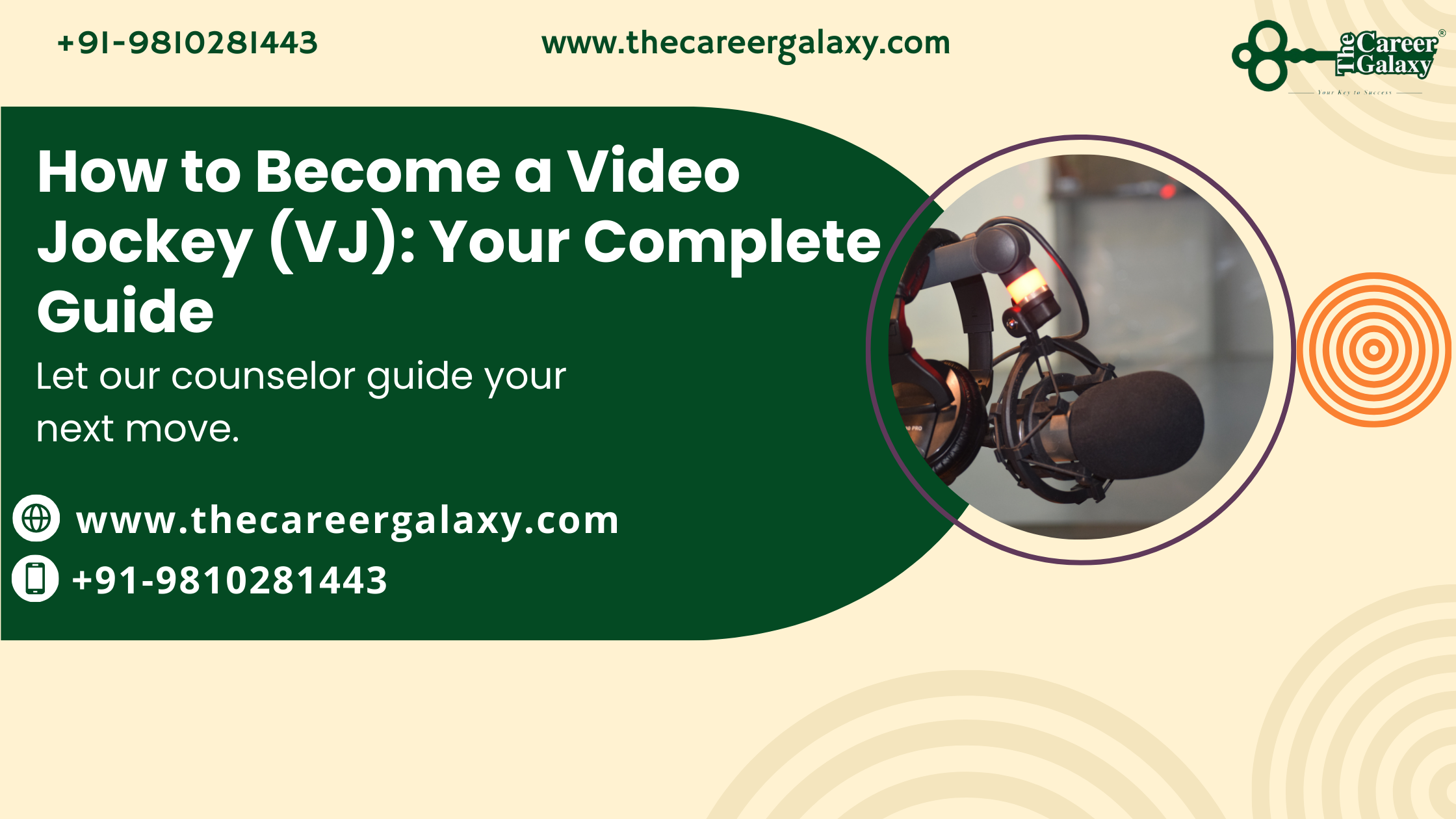
How to Become a Video Jockey (VJ): Your Complete Guide
How to Become a Video Jockey (VJ): Your Complete Guide
Are you fascinated by music, visuals, and live performances? Have you ever wondered how those stunning visuals at concerts, festivals, or nightclubs are brought to life? That’s the magic of a Video Jockey (VJ), or a Visual Jockey, a creative professional who blends music with mesmerizing visuals to elevate live performances.
With the rise of electronic music festivals, immersive experiences, and virtual events, the role of VJs is becoming more critical and exciting than ever before. If you’re an aspiring VJ, a music enthusiast, a video editor, or a student looking to carve out a unique career path, this guide will walk you through everything you need to know about becoming a Video Jockey.
What Does a Video Jockey Do?
A Video Jockey creates dynamic, real-time visuals that are synchronized with music during concerts, live shows, or even online streams. Their job is to curate a visual experience that enhances the impact of the sound. Think of them as the visual counterpart to DJs. While the DJ is spinning beats, the VJ ensures the audience is visually captivated with graphics, animations, video loops, and effects.
From major music festivals like Tomorrowland to intimate club nights, VJs are the unsung heroes who make live events truly immersive.
Now, if you’re ready to step into this vibrant creative field, here’s everything you need to know!
Skills You Need to Become a VJ
Much like any artistic field, VJing is an exciting blend of technical expertise and creativity. To kickstart your career as a VJ, here are the core skills you need to develop:
1. Technical Skills
Mastering the tools of VJing is a must. You’ll need to learn the ropes of VJ software, mapping tools, and hardware setups. Equipment such as projectors, LED screens, and mixers will also become part of your arsenal.
- Learn VJ software like Resolume, TouchDesigner, or MadMapper.
- Understand video formats and resolutions, as this is essential for ensuring visuals look top-notch on various screens.
- Familiarity with MIDI controllers and how they sync with visuals will give you an edge.
2. Music Knowledge
A strong grasp of music is essential for a VJ. Understanding beats, tempo, and rhythm will enable you to sync visuals seamlessly with the music. Many VJs develop this skill by collaborating with DJs or experimenting with their own tracks.
3. Creativity and Design Skills
Creativity is the heart of VJing. You’ll need to understand visual storytelling and create graphics, videos, and animations that accentuate the mood of the music. Exploring tools like Adobe After Effects, Blender, or Cinema 4D can help you create eye-catching visuals.
4. Performance Skills
VJing is a live performance art. You’ll be on stage or behind the scenes, so being calm under pressure and having the confidence to adapt to the energy of the crowd is crucial.
Essential Software and Equipment for VJ
To thrive as a professional VJ, having the right tools is vital. Here’s a breakdown of some essentials:
| Category | Tools and Equipment |
|---|---|
| Software | Resolume, TouchDesigner, MadMapper, Modul8 |
| Hardware | MIDI controllers, video mixers, projectors |
| Graphic Creation Tools | Adobe After Effects, Blender, Cinema 4D |
| Display Setup | LED screens, monitors, projection mapping equipment |
Begin with free trials of VJ software to practice your skills, and gradually invest in professional tools as your experience grows.
Building Your Portfolio
Your portfolio is your ticket to gain gigs and establish credibility in the VJing space. Here’s how you can build an impressive portfolio:
- Create a showreel that highlights your VJ skills. Include recordings of your visuals synced to music tracks to showcase your style.
- Collaborate with local DJs, bands, or event organizers to gain initial experience.
- Participate in small gigs, open mics, or even online live streams to build confidence.
- Use platforms like Behance, Vimeo, or Instagram to showcase your work and attract potential clients.
Remember, your portfolio doesn’t just showcase your skills; it reflects your personality and creative vision.
Why Networking Matters in VJing
Success as a VJ often depends on who you know. Networking is a powerful tool to connect with industry peers and unlock opportunities.
- Attend music festivals, industry events, and workshops where you can meet DJs, event producers, or fellow VJs.
- Join online forums or communities like VJ Union or Facebook VJ Groups to learn and share insights.
- Engage with your audience on social media and grow your personal brand.
Building relationships with event organizers is especially crucial, as they often hire VJs for their gigs.
Confused?
Is a career as a Video Jockey are good option for you
Monetizing Your VJ Skills
Once you’ve honed your craft, here are ways to monetize your VJing skills:
- Freelance Gigs
Start with local nightclubs, private events, or gigs for DJs to build a steady income while expanding your experience.
- Online Streaming
Platforms like Twitch and YouTube allow VJs to reach a global audience by streaming live visual performances.
- Collaborations
Team up with DJs, bands, or dance troupes for live events or tours.
- Educational Content
Use your expertise to create tutorials, courses, or workshops for aspiring VJs.
- Custom Visual Designs
Sell custom-made video loops or visual assets to other VJs or digital content creators on platforms like Gumroad.
Start Your Journey in VJing Today!
Becoming a VJ is an exciting and rewarding career path that combines your passion for music, technology, and creativity. By mastering the right skills, investing in quality gear, and building connections, you can turn your passion into a thriving career.
Remember, every expert was once a beginner. Start small, practice consistently, and most importantly, have fun while doing it!
Are you ready to light up stages and leave fans in awe? Begin your VJing adventure today!
